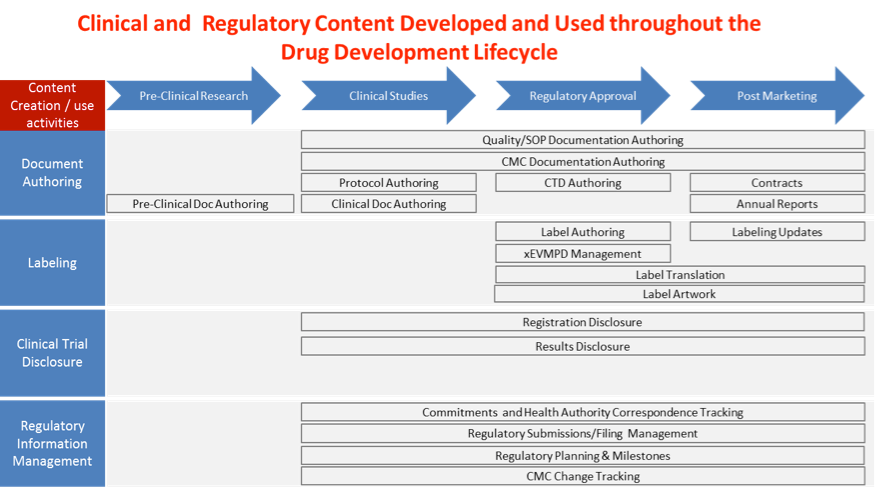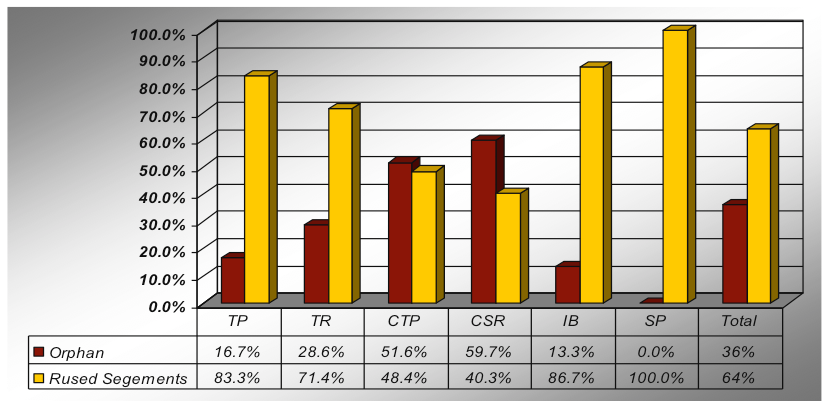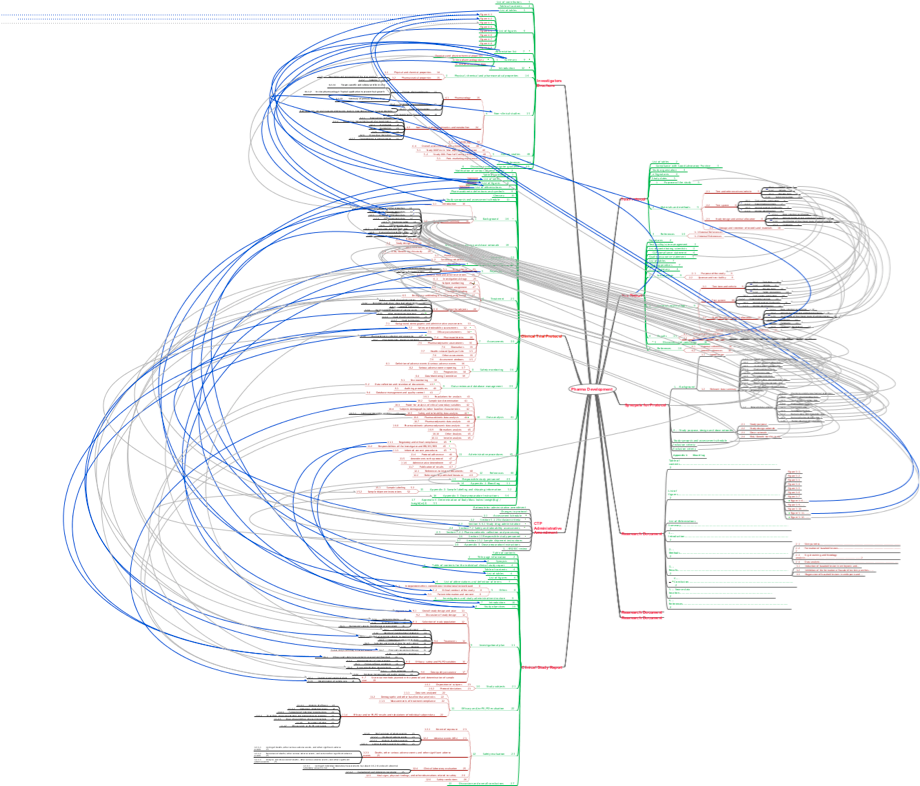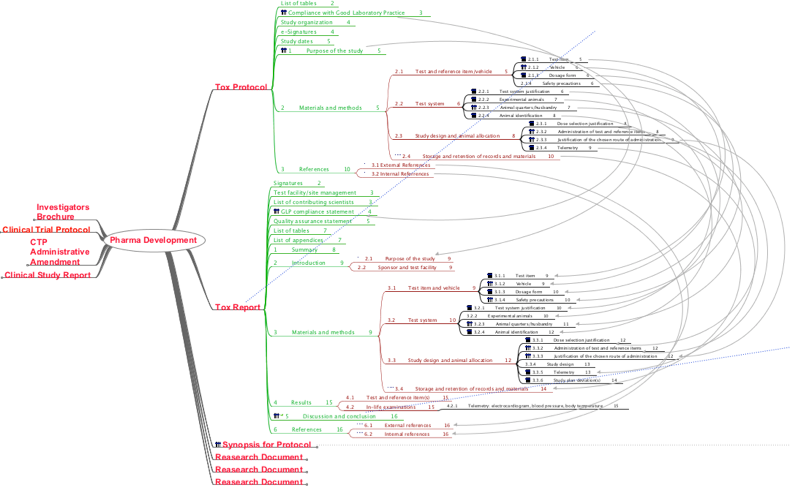New Technologies to Improve Clinical Information Management
Today's pharmaceutical industry faces many challenges as drug development costs continue to climb, pricing pressures mount, and new global markets gain critical importance.
Today’s pharmaceutical industry faces many challenges as drug development costs continue to climb, pricing pressures mount, and new global markets gain critical importance. One area receiving increasing attention is the opportunity to manage clinical content much more effectively. The life sciences industry spends several billion dollars a year on management of content and regulatory data(1). At the same time, the FDA, EMA, and other international regulatory bodies are expanding and amending requirements, clinical trials are becoming more complex, and effective partnering is becoming an ever more important capability. This increases the importance, complexity and risk related to managing core clinical information assets of the company.
These challenges slow innovation and raise drug costs. According to industry analyst firm IDC Health Industry Insights, a new drug costs from $800 million to $1.2 billion to bring to market, and a quarter of this cost is content and regulatory requirements(2). Clinical content contained in mandated documents are vital assets, often supporting drug development for decades. Inefficient management of clinical content can handicap the enterprise in the face of changing markets and regulatory needs.
Too often, life science companies view clinical trial information management as a discrete activity, and have not advanced a holistic view of information and content management as enterprise-wide processes. Hence, traditional information management systems and processes are risk-prone and increasingly problematic to business growth and success. Critical information is isolated in data and document silos, negatively affecting regulatory and operational compliance, strategic planning, innovation, and productivity.

Examples of processes in drug commercialization which create vast amounts of content that needs to be tracked, traced, and controlled. These processes are often prone to costly complexities in data management.
Toward Better Management of Clinical Content
In order to best compete in the global market, life science companies must maximize and leverage clinical information across all operations, including R&D, submissions, labeling and marketing. This is a tall order that most life science companies have attempted to do so with electronic document management systems but have not been successful.
While document management technologies have been around for many years, their limitations are far more significant in life sciences than in most other industries. Electronic document management is an electronic substitution for paper counterparts. The basic problem with document management technology is that the content resides locked in the document itself, with no interconnecting network of core data or rules across the enterprise. Thus the value of the clinical content is limited and it becomes easily lost and difficult to update. This document-centric approach needs to become a content-centric one.
What is needed is a more transformative structured content management platform, which works in harmony with a document management system if not outright replaces it. With this approach, all clinical content in every document is organized in data components, each granularly identified, cataloged, and stored in the component library for reuse, tracking, traceability, and regular updates. This type of system relies upon the reuse of core data, applies specific reporting templates and business rules, and leverages content management to better manage the creation and use of clinical and regulatory documents.
Considering that development of just one drug generates thousands of documents comprising millions of pages, it behooves a company to leverage their accumulated data and extract the value from past content exercises. The level of data reuse among documents is quite high – up to two-thirds of data is reused, according to an industry study(3).
In this study, component reuse across pre-clinical and clinical study content was analyzed at a global pharmaceutical company(4). Seven documents types were examined: Pharmacokinetic Studies, Toxicology Protocol (TP), Toxicology Report (TR), Protocol Synopsis (SP), Investigators Brochure (IB), Clinical Trial Protocol (CTP), and Clinical Study Report (CSR). The end result of this “information lifecycle” analysis was that up to two-thirds of data was reused. (Please see the accompanying graph chart.)

This graph shows the percentage of re-used data in a given document type. The yellow bars represent reused data, while the red bars represent unique data.(5)
Many types of information, such as Study Objective, have a lifecycle well beyond a simple link to one or two documents. In fact, some information segments persist for many generations of document cycles and have life-spans which can be up to a decade in length. Examples can be found where information is created back in the discovery phase and persist well into Phase III and IV Clinical Trials. By reusing content, companies can dramatically reduce time to market by compressing document cycle times while improving document quality and speeding up regulatory interactions.

Illustrating the workflow of reused clinical data components in drug development documents. Shown above is a map of all seven documents types analyzed in this study with document sections expanded as information segments. The grey connections show content that is partially linked across documents (meaning that information is referenced by edited or partially rewritten) and the blue connections show direct links across documents (complete reuse of the content without any edits).(6)

This image is a document map showing the relationships between the Toxicology Protocol and Toxicology Report. Complete relationships are linked by segment using grey lines.(7)
By leveraging company content, as an example, submission documents could be quickly built on-demand from a searchable library of core data components. All of the information in the resulting document is tracked back to reviews and discussions about each piece of the included content. The ability to change and validate a single document template and apply the changes to hundreds if not thousands of documents is essential for today’s global regulatory environment. This ensures that the correct data is incorporated into the response, all submission requirements are met, electronic sign-offs are present, and the latest regulatory rules are fulfilled. Additionally, all content should be inventoried and tracked to the final, submitted form.
The workflow and process study proved how information reuse in a structured content management system could cut costs, improve accuracy, and get products to market more quickly. When done correctly, a life science company can set the underlying architecture required to support what will amount to millions of information segments in hundreds of thousands of documents to be created in the coming years.
Life science companies are increasingly tying structured content management into other systems, such as regulatory management systems. This approach provides granular visibility into different facets of the drug development lifecycle. As clinical content documents are authored with a structured content management system, they can then be easily utilized by regulatory information management systems. One top global pharmaceutical illustrates the global benefits of this regulatory data management approach. This system tracks global product submissions, contacts, commitments, milestones, registrations and on-going maintenance submissions. This standardizes global regulatory processes and provides executives with timely reporting. The system makes global regulatory compliance more routine and maximizes resources.
In conclusion, life science companies should consider these new technology approaches to managing clinical content. A life science company taking a more sophisticated structured content management approach can better manage and automate the complex content requirements of the drug product life cycle.
About the Author
Dr. Satish Tadikonda is a 25-year pharma industry veteran and CEO/Founder of Virtify, Inc, a content and regulatory information management solution company for life sciences. Prior to Virtify, Dr. Tadikonda was the founder of Tribiosys, Inc., and CEO/President of Enmed, a clinical trial and data management systems company. Dr. Tadikonda holds a Doctorate in Electrical and Computer Engineering from the University of Iowa, and a Bachelor of Technology in Electrical and Electronics Engineering from Birla Institute of Technology and Science, India. He has published and presented more than 30 articles in peer-reviewed journals and international conferences on topics in global labeling, medical imaging, clinical trial data management/disclosure, and technology in the life sciences.
References
(1) - Alan S. Louie, Ph.D., Managing Paper at Its Roots: Extending Beyond Document Management to Enterprise Content Compliance, IDC Health Industry Insights, p. 4, February, 2010.- Matthew Herper, How Much Does Pharmaceutical Innovation Cost? A Look at 100 Companies, Forbes Magazine Online, http://www.forbes.com/sites/matthewherper/2013/08/11/the-cost-of-inventing-a-new-drug-98-companies-ranked/ , August 11, 2013
(2) Katie Thomas, Breaking the Seal on Drug Research, New York Times, http://www.nytimes.com/2013/06/30/business/breaking-the-seal-on-drug-research.html?_r=1& , June 29, 2013
(3) Novartis/IMS Information Segment and Reuse Study, p. 6, 2010. http://www.virtify.com/default/assets/File/Information_Segment_and_Reuse_Project.pdf
(4) Novartis/IMS Information Segment and Reuse Study, p. 4, 2010. http://www.virtify.com/default/assets/File/Information_Segment_and_Reuse_Project.pdf
(5) Novartis/IMS Information Segment and Reuse Study, p. 7, 2010. http://www.virtify.com/default/assets/File/Information_Segment_and_Reuse_Project.pdf
(6) Novartis/IMS Information Segment and Reuse Study, p. 6, 2010. http://www.virtify.com/default/assets/File/Information_Segment_and_Reuse_Project.pdf
(7) Novartis/IMS Information Segment and Reuse Study, p. 4, 2010. http://www.virtify.com/default/assets/File/Information_Segment_and_Reuse_Project.pdf
Putting Collective Insights Into Action to Advance Cancer Care: Key Examples From ASCO 2025
June 27th 2025At ASCO 2025, clinical operations leaders gained critical insights into how AI tools, bispecific antibodies, and evolving treatment paradigms are reshaping trial design, endpoint selection, and patient stratification.
Unifying Industry to Better Understand GCP Guidance
May 7th 2025In this episode of the Applied Clinical Trials Podcast, David Nickerson, head of clinical quality management at EMD Serono; and Arlene Lee, director of product management, data quality & risk management solutions at Medidata, discuss the newest ICH E6(R3) GCP guidelines as well as how TransCelerate and ACRO have partnered to help stakeholders better acclimate to these guidelines.
Funding Cuts Threaten Diversity in Clinical Research
June 27th 2025In this video interview, Kyle McAllister, co-founder, CEO, Trially, discusses how recent federal funding cuts are likely to undermine research focused on underrepresented populations, and why long-term investment in community-based studies is essential to closing persistent health equity gaps.